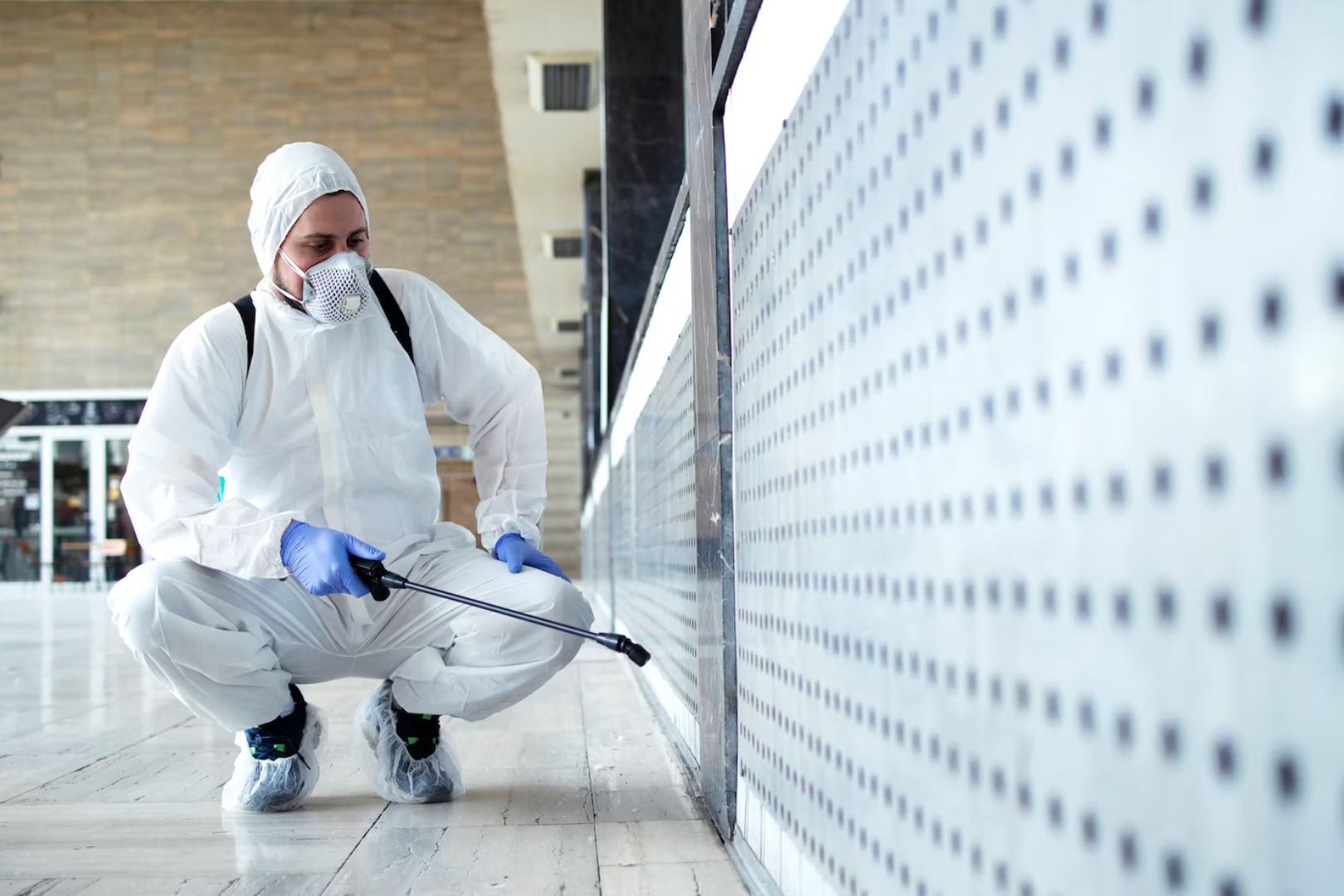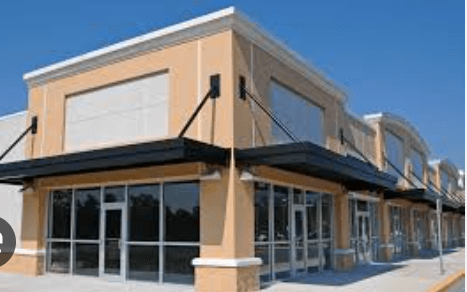The Role Of Mold Removal In Home Restoration

Mold in the home can be an unsettling experience. It can appear on walls, floors, and even furniture without warning, leaving you feeling helpless and wondering what to do next.
The good news is that there are steps you can take to help restore your home back to its original condition. Mold removal plays a critical role in this process.
In this article, we’ll explore the causes of mold in the home, the health risks it poses, and how mold removal professionals can help restore your living space to its former glory.
By taking pro-active steps now, you’ll have greater peace of mind knowing that your home is safe and free from potential health hazards caused by mold.
Identifying Mold in the Home
Spotting the signs of a potential problem can be frightening, so it’s important to know what to look for when it comes to mold in the home. Mold is one of those problems that can sneak up on you if you don’t take proactive steps toward early detection and effective prevention.
Look out for discoloration or staining on walls, ceilings, carpets or fabrics as this could signal the presence of mold. Pay attention to musty odors which often indicate an issue with moisture and humidity, both of which are conducive to mold growth in enclosed spaces.
It’s also important to inspect any possible entry points for water leaks such as windowsills, pipes or roofs as these areas are particularly vulnerable to mold formation.
Inspecting your home regularly can help catch signs of mold before they become a major issue and costly repair job. When inspecting your home, remember that the earlier you catch any issues related to mold growth, the better able you will be to address them quickly and efficiently while minimizing long-term damage.
Causes of Mold
Unwanted growth can be a telltale sign of an underlying issue in your abode that needs to be addressed. When it comes to mold, recognizing the signs is key for prevention and restoration.
Mold spores are present almost everywhere, so when an area has the right combination of moisture, warmth, and food sources, it can begin to grow quickly. Mold growths thrive on organic materials such as wood and paper products, insulation materials, carpets, drywall, fabric items like clothing or furniture upholstery — even household dust — making them particularly common in damp basements or bathrooms.
Poor ventilation can also contribute to higher levels of indoor humidity and create a hospitable environment for mold growth. It’s important to understand what causes mold so you can take steps to prevent its occurrence in your home.
If left unchecked, mold in the home can cause serious damage and health risks. Therefore, understanding its cause is paramount when considering ways to restore your abode back to optimal condition.
Health Risks of Mold
With the potential to cause serious damage and health risks, it’s important to know the dangers of mold in your living space.
Mold can be a major allergen source that affects the quality of indoor air. In addition, it can lead to asthma symptoms like coughing and wheezing, as well as allergic reactions like skin rashes and eye irritation.
Here is a list of some common health risks associated with mold:
* Respiratory illnesses
* Asthma attacks
* Hypersensitive pneumonitis
* Allergic rhinitis and sinus infections
It’s important to be aware of these consequences when dealing with any restoration or home renovation project. If you notice any signs of mold growth in your home, it’s essential to take immediate action by hiring a professional for mold removal services.
Taking steps towards restoring your home can help ensure that you are living in a safe environment free from any potential health risks.
Mold Removal Process
You’ll need to take a few steps when it comes to mold removal.
First, you must be sure to prepare the affected area properly, for example by sealing off any vents or openings that may lead to other areas of your home.
Second, proper containment is essential; use plastic sheeting and negative air pressure machines as necessary so that no contaminated air escapes into other areas of the home while cleaning.
Finally, you’ll need to clean all surfaces with an appropriate cleaner and then repair and restore any damage caused by the mold.
Preparation
Prior to beginning any restoration project, it’s essential to take steps for ensuring the necessary preparation is complete. This includes creating an environment that eliminates moisture and maintains good air quality.
To achieve this, homeowners should:
1. Inspect their home for areas of water damage and address them immediately.
2. Invest in a dehumidifier or humidifier as needed to stabilize the home’s humidity levels.
3. Install a mold-resistant shower liner or tub caulk sealant to help prevent future growth.
4. Utilize exhaust fans while showering or cooking and open windows regularly for fresh air circulation throughout the home.
These steps are essential to keeping your home properly prepared during the mold removal process. They will ensure that any future projects go smoothly with minimal disruptions from mold growths due to uncontrolled moisture conditions. With proper preparation, you can have peace of mind knowing that your restoration project is on track for success!
Containment
Containment is key to ensuring successful and safe completion of any restoration project – it’s essential to keep mold spores from spreading throughout the rest of the house.
To achieve this, dampness prevention and air circulation are both crucial. During the containment phase, all areas that have been affected by mold should be sealed off with plastic sheeting or other materials.
This sealing process helps limit the spread of airborne contaminants like mold spores. All windows in the area should also be closed so that outside air doesn’t enter and cause further contamination.
It’s also important to use exhaust fans or ventilation systems while working on containment, as these can help remove airborne particles from within the space.
When done properly, containment can help ensure a successful and safe home restoration project free from any unwanted mold growth.
Cleaning
Once the containment process is complete, it’s time to start the cleaning process. This step is crucial for effective mold removal and proper home restoration.
Cleaning requires a plan that includes chemical safety and air purification to ensure all traces of mold are removed from surfaces, fabrics, and other materials. It’s important to remember that not all cleaners are created equal; some may be too strong or too weak for particular materials or surfaces. Therefore, you should always check with the manufacturer before using any cleaner for your specific needs.
You’ll also want to research the best type of cleaner for the surface you’ll be working on. For example, oil-based cleaners for wood or non-corrosive cleaners for metal surfaces.
Proper ventilation is key during this step as well because mold spores can spread quickly if proper air circulation isn’t present in your workspace.
With cleaning complete, you’re now ready to move onto repair and restoration activities.
Repair and Restoration
After the cleaning process has been completed, it’s time to move onto the next step: repair and restoration. With anticipation building, you can almost feel the transformation beginning as you take on this vital role.
Repair and restoration typically involve waterproofing measures to prevent future mold growth, such as roof or wall repairs that eliminate any sources of water penetration. Additionally, ventilation improvements may be necessary if your home has poor air circulation which could lead to moisture buildup and subsequent mold growth. These are all essential steps in restoring your home to a healthier environment with minimal risk of future mold growth.
As you work through these improvements, you are playing an important role in ensuring that the living space is safe for everyone who inhabits it – and providing peace of mind for years to come.
The Role of Mold Removal in Home Restoration
Containing and removing mold can play an integral part in restoring a home to its former glory. It’s important for homeowners to understand the role of mold removal when it comes to repairing or restoring their homes.
Improving ventilation helps to reduce the humidity and moisture levels in the home which prevents mold from growing.
Testing the air quality inside the home is important as it allows you to detect any potential areas where mold might be present before it becomes an issue.
Professional cleaning services can be hired to properly remove any existing mold and treat affected areas with special cleaners that will prevent future growth.
Replacing contaminated materials such as walls, carpets, furniture, etc., can also help restore a home back to its original state. With proper precautionary measures taken during restoration, homeowners can significantly reduce the risk of future mold growth in their homes.
By taking these steps now, they can ensure their homes remain healthy and safe for years to come.
Preventing Future Mold Growth
You can dramatically reduce the chances of mold growth in your living space by taking preventative measures now!
The two most important factors to consider when preventing future mold growth are air circulation and moisture control. Good ventilation is key for keeping air circulating throughout your home, since stagnant air allows moisture build-up and encourages mold growth.
A few simple steps like opening windows on nice days or using a fan can help increase air flow and reduce humidity levels. Installing exhaust fans in high-moisture areas, such as bathrooms and kitchens, will also help keep the area dryer.
Additionally, it’s important to check around doors and windows for any water leakage that could be causing excess moisture indoors. If you spot any leaks, repair them immediately with waterproof sealant to avoid long-term damage from mold growth.
It’s also essential to quickly address any water issues, such as flooding or overflowing sinks or toilets, that may have occurred due to plumbing problems or natural disasters. Lastly, use dehumidifiers if needed in particularly damp rooms in order to maintain optimal humidity levels of 30%–50%.
With these simple yet effective preventive measures taken into account, you’ll be able to rest easy knowing your home is safe from potential future mold infestations!
Conclusion
You’ve just gained an understanding of the role of mold removal in home restoration. Removing mold is essential to restoring your home and protecting your family’s health. The process can be complicated, but it doesn’t have to be daunting.
With the right expertise, you can get rid of the pesky problem quickly and effectively. So take a breath, relax, and let a professional help you with this delicate task. That way, you can enjoy a healthier home without the worry that comes with having mold around.




